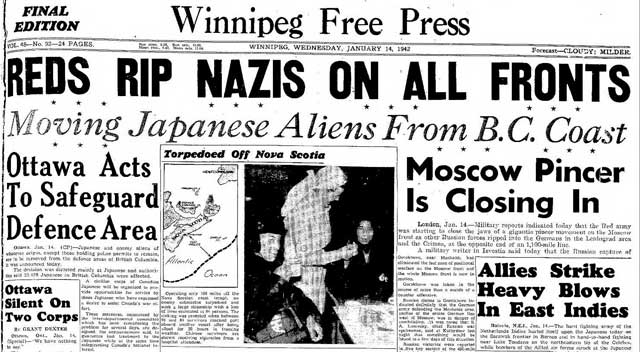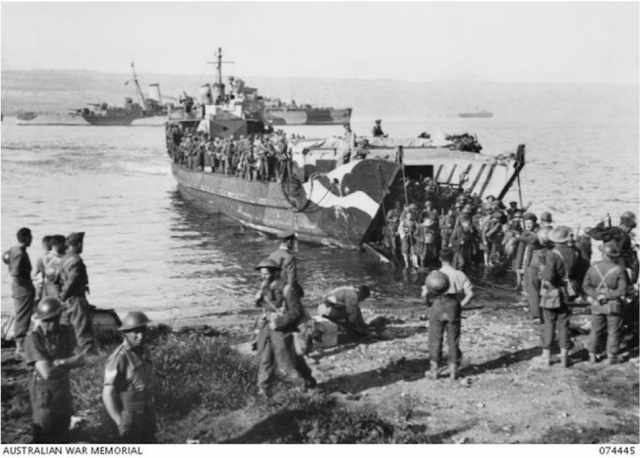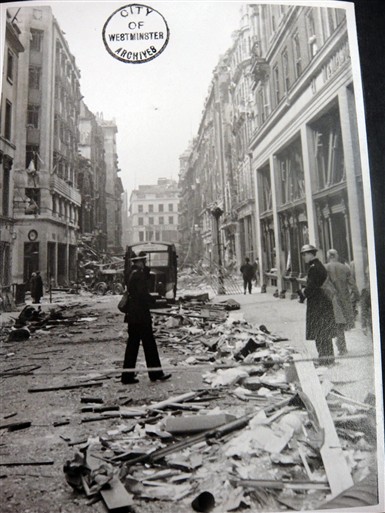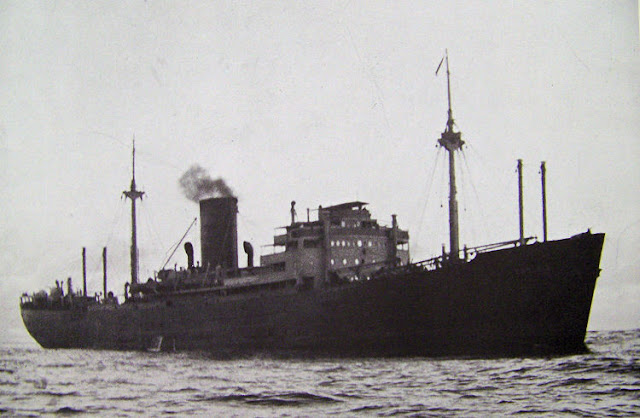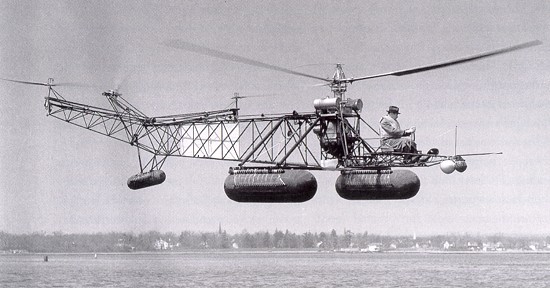Anglo-Iraq War: The British on
6 May 1941 gradually have been pushing the Iraqis back from their stronghold at Habbaniyah Airfield west of Baghdad. Today, they clear the plateau to the south which overlooks the airfield from which the Iraqis have been shelling the airfield with 28 artillery pieces. The Iraqis flee in disarray after taking 1000 casualties, falling back on Baghdad with the rag-tag British troops (chiefly the King's Own Royal Regiment) in pursuit in armoured cars. The British catch up to the Iraqis at Sinn El Dhibban, taking 433 prisoners while losing 7 killed and 14 wounded.
Hitler still wants to send troops and planes to Iraq. His representative in Paris, Otto Abetz, receives tentative permission from Admiral Darlan, the Foreign Minister of Vichy France under Petain, to do so (in exchange for cutting the French indemnity owed to Germany from 20 million to 15 million Reichsmarks per day). Of course, there is the little matter of getting German troops to Syria in the first place, which is a tricky proposition given Royal Navy command of the eastern Mediterranean. The British already have two columns of troops of their own on their way across the desert from their possessions in Palestine and today receive the 21st Indian Brigade at the port of Basra, so the possibility of a remote battle between Axis and Allied troops in the desert looms.
Hermann Goering is eager to increase his prestige with operations in Iraq. He organizes Fliegerführer Irak with 12 Messerschmitt Bf110 fighters and 12 Heinkel He111 bombers under the command of Luftwaffe Colonel Werner Junck. Of course, this force also must find its way to Iraq.
In London, Winston Churchill writes an angry memo to General Ismay about a military appreciation he has received of the Iraq situation. The analysis by Middle East Commander General Archibald Wavell and General Bernard Auchinleck of the Indian Command suggests that the British troops in Palestine, which are headed to relieve the British forces in Iraq, are insufficient to overcome the Iraqi Army. Wavell and Auchinleck are pessimistic and they project that the outnumbered British will be forced to surrender by the 12th of May. Churchill notes that British losses in Iraq "have been nominal as so far reported" and rejects the recommendation that negotiations with Iraqi leader Rashid Ali be planned. "We should treat the present situation like a rebellion," Churchill concludes, and the British Army has a century of experience in handling those.
 |
| Damage in Belfast, Ireland from the Belfast Blitz which concluded on 5 May 1941 (Belfast Telegraph). |
European Air Operations: The Luftwaffe attacks Liverpool again as part of the May Blitz. The bombing causes additional damage.
The Germans damage several ships. These include:
- 4861-ton British freighter Industria, but it manages to make it to Greenock for repairs
- 3874-ton Greek freighter Moscha D. Kydoniefs
The Germans also attack Greenock, Scotland. This is the first of two consecutive nightly attacks that collectively are known as the Greenock Blitz. The Luftwaffe loses at least two bombers during the night.
The RAF sends a Roadstead operation to Gravelines during the day. RAF Bomber Command sends 8 aircraft to attack shipping. After dark, it sends 16 bombers against Le Havre and 115 to attack Hamburg.
Kommodore Mölders of JG 51 shoots down an RAF No. 601 Squadron Hurricane for another victory in his new Bf 109F fighter.
East African Campaign: Indian Troops attacking at Amba Alagi are pinned down by withering Italian crossfire throughout the day. They retreat after dark.
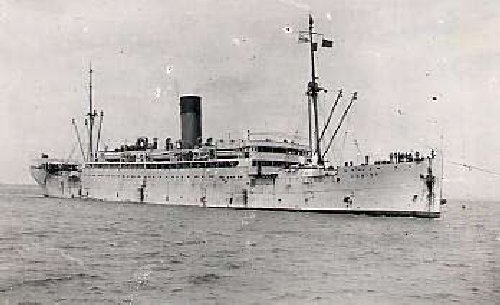 |
| HMS Camito, sunk on 6 May 1941. |
Battle of the Atlantic: U-103 (Kapitänleutnant Viktor Schütze) torpedoes and sinks 5529-ton British freighter Surat about 100 miles off Conakry, Guinea. There are three deaths. There is still an element of chivalry in the sea war, with the Germans helpfully righting a lifeboat for the struggling British crew.
U-103 also torpedoes and sinks 4752-ton British freighter Dunkwa in the same area. There are three deaths.
U-556 (Kptlt. Herbert Wohlfarth) is on its first patrol out of Kiel when it uses its deck gun and sinks 166-ton Faroes fishing trawler Emanuel west of the Faroe Islands. There are three deaths.
U-105 (Kptlt. Georg Schewe) torpedoes and sinks 4255-ton British freighter Oakdene midway between Guinea-Bissau and Brazil. Everyone survives.
U-97 (Kptlt. Udo Heilmann) torpedoes and sinks Royal Navy boarding vessel HMS Camito southwest of Ireland. There are 28 deaths and a few survivors. U-97 also torpedoes and sinks 6466-ton Italian freighter Sango in the same area. The Camito has been escorting the recently captures blockade runner Sango to port in England - obviously ineffectively.
Convoy HG 61 departs Gibraltar bound for Liverpool, Convoys HX 125A and B departs from Halifax also bound for Liverpool.
Royal Navy submarine HMS Sea Nymph is laid down.
U-613 and U-614 are laid down.
 |
| Igor Sikorsky, wearing his customary homburg, at the time of his record-breaking helicopter flight in VS-300 on 6 May 1941. |
Battle of the Mediterranean: The battle on land at Tobruk has subsided for the moment, so attention turns to the war at sea. Both sides depend completely on supplies from their home countries, with the Axis troops favored by the short but somewhat risky route from Naples to Tripoli. The Allies have a relatively clear supply route - setting aside the omnipresent threat of U-boats - around Cape Horn and up toward Suez. However, that passage takes several weeks, time that the Allies cannot spare. So, with British Prime Minister Winston Churchill as the main instigator, the decision has been made to send a convoy "up the gut" from Gibraltar all the way across the Mediterranean to Malta and Alexandria. This is the Tiger Convoy.
Tiger leaves Gibraltar today. It is composed of five large troop transports escorted by the aircraft carrier HMS Ark Royal, battleships Renown and Queen Elizabeth, cruisers Fiji, Gloucester, Naiad and Sheffield, and the 5th Destroyer Flotilla. Ark Royal has a new commander, Captain Loben Maund, as Captain Holland has been relieved due to "stress." The convoy is limited in speed by its slowest ship, as all convoys are, and travels at a still-brisk 14 knots (26 km/h). Italian aircraft quickly spot it, and the Luftwaffe readies its forces on Sardinia and Sicily to intercept it. Curiously, the Italian Navy remains in port.
Winston Churchill, who apparently is in a foul mood throughout the day, sends an angry memo to Air Chief Marshal Sir Charles Portal which includes in relevant part:
Here is another shocking week at Takoradi. Only 18 aircraft have been despatched, whereas I think a programme of nearly double the number was promised. I am afraid it must be realized that this is a very great failure in our arrangements, which may play its part in a disastrous result to the great battle proceeding in the Nile Valley [by which Churchill apparently means North Africa in general].
Takoradi is the airfield in the British colony of the Gold Coast (Ghana) which serves as the key transit hub for flights to Cairo (a 3700-mile air route) aka the West African Reinforcement Route (WARR). Churchill wishes more planes to be shuttled from Takoradi to Cairo to help in the defense of North Africa. Bemoaning the "complete breakdown," Churchill demands an accounting.
Churchill also sends a sarcastic memo to General Sir John Dill, asking that the suitability and supply of maps by Allied forces in Crete be determined, "Otherwise we shall soon find that any German arrivals will be better informed about the island than our men."
In another memo, Churchill demands of Admiral Pound an inquiry into a "lapse of Staff work" over problems transporting a mobile naval base defense organization to Suda Bay, Crete. The base took 12 weeks to arrive and was packed in a disorganized fashion, he notes.
British military intelligence is hardening that Crete will be the next German objective in the Mediterranean. This is largely based on Ultra decrypts of coded Wehrmacht transmissions. However, Churchill is desperate to not let the Ultra secret out, so he allows commanding General Bernard Freyberg to believe that the Germans will arrive in ships rather than by air.
The German 8th Panzerregiment arrives at Tripoli aboard a convoy to Tripoli.
The RAF (830 Squadron) attacks Tripoli, losing a plane. Two crewmen are made prisoner and one perishes.
Royal Navy submarine HMS Taku torpedoes and sinks 2322 ton Italian freighter Cagliari about three miles (5 km) off Fuscaldo, southern Italy.
Royal Navy submarine HMS Truant torpedoes and sinks 1716 ton Italian freighter Bengasi a few miles off Cavoli, Elba, Italy.
Royal Navy submarine HMS Triumph spots a German convoy heading north from Tripoli. It attacks but misses.
Royal Navy submarine HMS Cachalot arrives at Gibraltar from England loaded with supplies for Malta. It will continue toward the island on the 8th.
At Malta, the air defense is refined to alternate defense by fighters and anti-aircraft fire. During a large 36-plane Luftwaffe raid in the evening on Grand Harbour, the fighters shoot down one or two raiders and damage another. In addition, anti-aircraft fire shoots down two Junkers Ju 88s.
Convoy AN 30, composed of four freighters, departs from Haifa and Port Said bound for Suda Bay, Crete.
 |
| Joseph Stalin, 1941. |
Battle of the Indian Ocean: Convoy US 10B departs from Colombo. It includes three large liners - 44,786 ton Aquitania, 43,450 ton Ile De France, and 35,739 ton Mauretania. It is escorted by New Zealand light cruiser Leander.
War Crimes: Churchill sends a memo to General Ismay which states in relevant part:
Surely I gave directions that the C-in-C was to have full liberty to capture enemy hospital ships in retaliation for their brutality.
On its face, this memo is evidence of Churchill authorizing war crimes (Churchill asks for previous correspondence on the matter to be found, but it is unclear if such exists).
Attacking or capturing hospital ships is against the rules of war. There have been many instances on both sides of attacks on hospital ships, though, so it is open to interpretation how much of a breach of international law Churchill's stance really is. Certainly, whoever wins the will is likely to hide their own breaches of the rules of warfare and prosecute the other side's transgressions, this is known sardonically on both sides as "victor's justice."
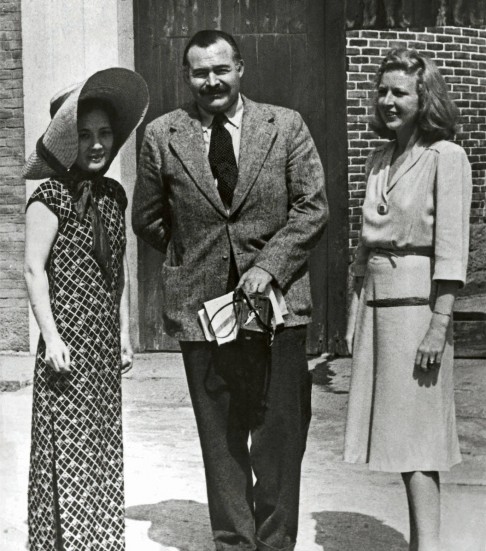 |
| Ernest Hemingway with Madame Chiang Kai-shek (left) and Martha Gellhorn in provisional capital Chungking (Chongqing), China. |
Spy Stuff: Soviet spy Richard Sorge, posing as a hard-partying newspaperman in Tokyo, warns Stalin of German plans to invade the Soviet Union. In his dispatch today, he writes:
Possibility of outbreak of war at any moment is very high…. German generals estimate the Red Army’s fighting capacity is so low…[it] will be destroyed in the course of a few weeks.
This information, of course, is extremely accurate and jibes with more general warnings coming from various other sources, such as his military attache in Berlin. However, Stalin does not think much of Sorge - viewing him as a sort of ne'er-do-well more interested in partying than providing useful information. Accordingly, Stalin does not change his own dispositions to any great extent.
Separately and coincidentally, Ernest Hemingway, who many think serves as a US spy (this is only hypothetical and never proven) and who accurately predicts the eventual outbreak of war between the National and Communist Chinese, departs today from Hong Kong aboard a Pan Am Clipper to return to the United States. Hemingway has been in Asia for 100 days on a very curious trip accompanying his new bride, Martha Gellhorn. Hemingway has led a hard-partying lifestyle (which seems to have been common among expatriates in Asia at the time). Hemingway, in fact, has spent much of the trip alone - or, shall we say discreetly, without his wife - and his solo departure is commonly seen as marking the end of his brief marriage. Gellhorn, who actually may have been the spy in the couple (all of this is conjecture), will carry a grudge against Hemingway for the rest of her life. Hemingway will have many more direct interactions with World War II over the next few years.
US/Australian Relations: Australian Prime Minister Robert Menzies, aboard a Clipper flying boat, arrives safely in Bermuda. He has breakfast, then departs immediately for New York aboard a Douglas DC-3. He is ensconced in the Ritz-Carlton by dinnertime.
Vichy French/Japanese Relations: The Japanese conclude a trade agreement with French Indochina.
 |
| Republic XP-47B Thunderbolt prototype, 40-3051, at Farmingdale, New York, 1941. (Republic Aviation Corporation). |
US Military: First flight of the Republic XP-47B (40-3051), with Lowry P. Brabham as the pilot, at Republic Field in Farmingdale, Long Island, New York. The aircraft performs well, and the US Army Air Corps approves further development. Designed by Alexander Kartveli, the large all-metal fighter with elliptical wings has had several redesigns, but this one sticks. After much further development, the design will become the famous P-47 Thunderbolt, of which 15, 579 will be built.
Igor Sikorsky continues working on his helicopter design, the VS-300, which has been the designation for a constantly changing design. Today, he scores a major success when he flies the experimental chopper (hovering) for 1 hour, 32 minutes and 26 seconds, which is a new record, beating that of the Luftwaffe's Focke-Wulf Fw 61.
The Douglas Aircraft Company begins taxiing tests of its new XB-19 four-engine bomber at Santa Monica Airport. The plane is the largest in the world and is so heavy (86,000 lbs or 39,009 kg) that it breaks through the airport pavement. The U. S. Government has paid $1,400,064 for it and Douglas itself has spent almost $4,000,000 in company funds to complete it.
Looking ahead, the XB-19 is remembered as the B-19, but after a long period of development (which aided the development of other planes) was not accepted for production and was scrapped. Two of its enormous main tires will be saved and put on display at the Hill Aerospace Museum at Hill Air Force Base in Ogden, Utah and the National Museum of the United States Air Force in Dayton, Ohio, though apparently, they are no longer there. Of course, the Germans would love to have any effective four-engine bomber, while the Americans have the luxury of testing out different kinds, keeping some and rejecting others.
Radio star Leslie Townes "Bob" Hope does a rare personal appearance at March Field in Riverside, California, broadcasting his Pepsodent show from there. Hope unexpectedly finds that he enjoys performing before a live audience, particularly servicemen who are not too demanding about the quality of the show. This will lead to Hope's long association with the USO during World War II and thereafter. Hope is a US citizen, naturalized at the age of 17 in 1920 after having immigrated from the United Kingdom, but is well past draft age and is not compelled to participate in the war. Hope will be a leading figure among a select group of celebrities including Hemingway and John Wayne who will work with the US military to provide various specialized services without actually mustering in.
The aircraft carrier USS Yorktown (CV 5) is transiting the Miraflores Lock of the Panama Canal at night when it scrapes the side and sustains slight damage.
 |
| A postcard of the B-19. It receives a lot of attention in the media throughout its unsuccessful life. |
Soviet Government: In a decision approved several days ago, Stalin officially succeeds Foreign Minister Vyacheslav Molotov as the Chairman of the Council of People's Commissars. Thus, Stalin becomes the
de jure as well as the
de facto leader of the Soviet Union - but there never at any time has been any doubt whatsoever that he is the boss. This ruling-from-behind-the-scenes strategy is a recurring theme in Russian politics.
The change is noted by the German ambassador to the Soviet Union, Count Werner von der Schulenburg. Schulenburg opposes any military action against the Soviet Union, though he has not officially been made aware of the plans for Operation Barbarossa (though he may at this time be aware through rumors and personal observations). Ambassador Schulenburg reports the change in Soviet leadership to Berlin but passes it off as nothing but a public rebuke of Molotov for allowing German/Soviet relations to wither. The reasons for the change, in fact, are murky and subject to interpretation, especially considering that on the 5th of May, Stalin had given two bellicose secret speeches to graduating military officers in the Kremlin which strongly suggested that he, too, was contemplating beginning a war with Germany. Molotov, in any event, is not out of favor. Stalin may, viewing the change in that context, be preparing his leadership role for the war he himself intends to start.
 |
| Wehrmacht soldiers chatting with Dutch kids, May 1941. |
Philippines: Newly arrived Brigadier General Henry B. Clagett assumes command of the newly created Philippine Department Air Force. His chief of staff is Colonel Harold Huston George.
Poland: A Polish doctor, Zygmunt Klukowski, observes the Germans conscripting local civilians to build military installations. Klukowski finds this curious as he notes it in his diary since there seems little need to do so in peacetime conditions.
Yugoslavia: Serbs in Kijevo and Tramošnja villages are celebrating Đurđevdan slava, an Eastern Orthodox holy day in honor of Saint George when the Ustaše do something that provokes them. This develops into a massive revolt called the May 1941 Sanski Most revolt, or alternatively the Đurđevdan uprising or the revolt of the Sana peasants. The Serbs generally were pro-British before the war, and there is an element of baiting going on by the Ustaše regime. The revolt quickly spreads, and the Serbs chase the Ustaše out of town. The escaping Ustaše request German military aid from the garrison at Prijedor.
American Homefront: US Secretary for War Henry L. Stimson makes a radio broadcast in which he announces his support for using US warships to protect British freighters. He says that Americans must sacrifice in defense of freedom. According to Stimson:
The world is facing so great a crisis that all of our efforts must be turned toward the defense of our nation's safety. . . . our own self-defense requires that limits should be put to lawless aggression on the ocean. The President has said that we must not allow the steps which we have already taken to become ineffective.
 |
| USS Grayback during a shakedown cruise in Long Island Sound, 6 May 1941 (United States National Archives and Records Administration). |
May 1941 May 1, 1941: British Hold TobrukMay 2, 1941: Anglo-Iraq WarMay 3, 1941: Liverpool HammeredMay 4, 1941: Hitler Victory SpeechMay 5, 1941: Patriots DayMay 6, 1941: Stalin In CommandMay 7, 1941: May BlitzMay 8, 1941: Pinguin SunkMay 9, 1941: U-110 CapturedMay 10, 1941: Hess Flies Into HistoryMay 11, 1941: The Hess Peace PlanMay 12, 1941: Tiger Arrives SafelyMay 13, 1941: Keitel's Illegal OrderMay 14, 1941: Holocaust in ParisMay 15, 1941: Operation BrevityMay 16, 1941: Blitz EndsMay 17, 1941: Habbaniya RelievedMay 18, 1941: Croatia PartitionedMay 19, 1941: Bismarck at SeaMay 20, 1941: Invasion of CreteMay 21, 1941: Robin Moore SinkingMay 22, 1941: Royal Navy Destruction Off CreteMay 23, 1941: Crete Must Be WonMay 24, 1941: Bismarck Sinks HoodMay 25, 1941: Lütjens' Brilliant ManeuverMay 26, 1941: Bismarck StoppedMay 27, 1941: Bismarck SunkMay 28, 1941: Crete LostMay 29, 1941: Royal Navy Mauled Off CreteMay 30, 1941: Sorge Warns, Stalin IgnoresMay 31, 1941: British Take Baghdad2020






